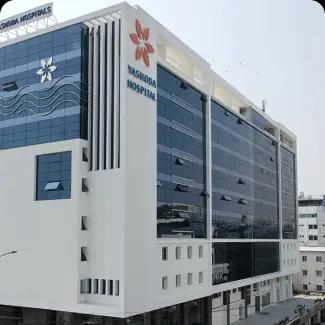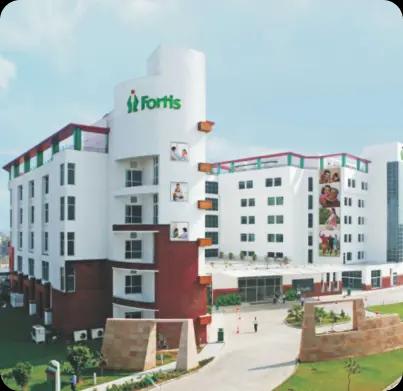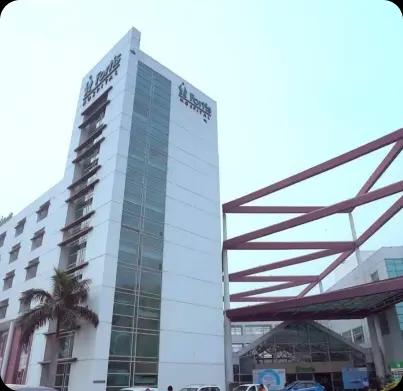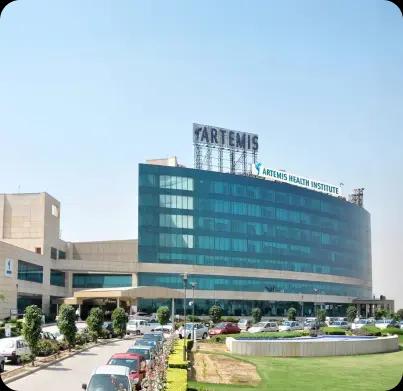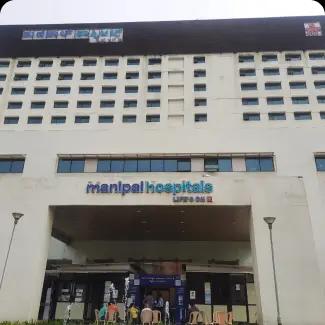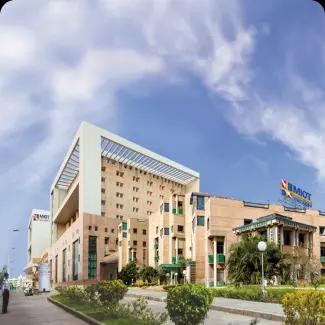
Insertion of Ventricular Assist Device (VAD)
A ventricular assist device (VAD) is a device that helps pump blood from the lower chambers of the heart to the rest of the body. It's a treatment for a weakened heart or heart failure. A VAD may be used to help the heart work while waiting for other treatments, such as a heart transplant. Sometimes a VAD is used to permanently help the heart pump blood.
A ventricular assist device (VAD) is a device that helps pump blood from the lower chambers of the heart to the rest of the body. It's a treatment for a weakened heart or heart failure. A VAD may be used to help the heart work while waiting for other treatments, such as a heart transplant. Sometimes a VAD is used to permanently help the heart pump blood.
Symptoms Of Insertion of Ventricular Assist Device (VAD)
Symptoms
When you should go for a Insertion of Ventricular Assist Device Surgery
Types of conditions
There are four main types of Insertion of Ventricular Assist Device (VAD)
Left Ventricular Assist Device (LVAD)
Right Ventricular Assist Device (RVAD)
Biventricular Assist Device (BiVAD)
Total Artificial Heart (TAH)
Left Ventricular Assist Device (LVAD)
- Implantation: An LVAD is surgically implanted into the left ventricle of the heart and connected to the aorta, the main artery that carries oxygen-rich blood from the heart to the rest of the body.
- Function: The LVAD helps pump blood from the left ventricle into the aorta, thereby supporting the heart's function in pumping blood to the body.
- Indications: LVADs are commonly used as a bridge to heart transplantation or as destination therapy for patients who are not eligible for heart
WHEN YOU SHOULD GO FOR A VENTRICULAR ASSIST DEVICE SURGERY
Insertion of a Ventricular Assist Device (VAD) surgery is typically recommended for individuals with severe heart failure who haven't responded to other treatments such as medications, lifestyle changes, or less invasive procedures like angioplasty or stenting. Here are some situations where VAD surgery might be considered:
- Advanced Heart Failure: When the heart is severely weakened and unable to pump enough blood to meet the body's needs, despite optimal medical management.
- Bridge to Transplant: For patients who are awaiting heart transplantation, a VAD can serve as a temporary solution to support heart function until a suitable donor heart becomes available.
- Destination Therapy: In cases where heart transplantation is not an option (due to age, medical condition, or other factors), a VAD may be implanted as a long-term solution to improve quality of life and extend survival.
- Acute Decompensated Heart Failure: In some cases of acute decompensated heart failure where other measures have failed, a VAD may be used as a temporary support until the heart recovers.
- Refractory Cardiogenic Shock: In emergency situations where the heart is unable to pump enough blood to meet the body's needs despite aggressive medical therapy, a VAD may be used as a life-saving intervention
DIAGNOSIS
Not everyone with severe heart failure is eligible for a ventricular assist device. Once you’re diagnosed with advanced heart failure, you have comprehensive medical and psychological evaluations. This may include assessing current heart and end-organ function. Healthcare providers screen for complex health issues such as breast cancer, prostate issues and infectious diseases. Additional tests include:
-
Electrocardiogram : This quick test records the electrical activity of the heart. It shows how the heart beats.
-
Echocardiogram: An echocardiogram uses sound waves to create pictures of the beating heart.
-
Computed tomography (CT) scan : A cardiac CT scan uses a series of X-rays to create detailed images of the heart and heart valves
-
Exercise testing
-
Both left and right cardiac catheterizations: A long, thin flexible tube called a catheter is inserted in a blood vessel, usually in the neck. It's moved to the heart using X-rays as a guide. During this test, pressures and blood flow in the heart can be checked. This test can help determine if an LVAD or other treatment is needed.
Evaluations also include discussions about living with a VAD as well as detailed education for basic day-to-day tasks of caring for the VAD.
RISK FACTORS
Potential complications associated with the surgical implantation of a VAD as well as the lifelong usage of the VAD include:
- Arrhythmias.
- Bleeding.
- Blood clots.
- Infection.
- Device malfunction.
- Right-sided heart failure.
- Cerebrovascular accident.
PREPARING FOR SURGERY
If you're getting an LVAD, you'll need surgery to implant the device. Before surgery, your health care team will:
- Tell you what to expect before, during and after the surgery.
- Explain the possible risks of VAD surgery.
- Discuss any concerns you have.
- Ask if you have an advance directive.
- Give you specific instructions to follow during your recovery at home.
Food and medications Bring a list of all the medicines you take with you to the hospital. Also note if you have any allergies to medicines. Your health care team reviews your medicines before surgery. You'll likely need to stop eating or drinking for several hours before surgery. Your health care team gives you specific instructions.
Clothing and personal items
- Bring these items with you to the hospital:
- A copy of your advance directive, if you have one.
- Eyeglasses, hearing aids or dentures.
- Personal care items, such as a toothbrush, a hairbrush or comb, and shaving equipment.
- Loose fitting, comfortable clothing.
- Items that may help you relax, such as portable music players or books.
You'll likely be asked to avoid wearing:
- Contact lenses.
- Dentures.
- Eyeglasses.
- Jewelry.
- Nail polish.
Before the procedure You may be admitted to the hospital a few days before getting an LVAD. While you're in the hospital, you may have other treatments for your weakened heart or heart failure. Certain tests will also be performed like:
- Electrocardiogram
- Echocardiogram
- CT scan
- Catheterization
During the procedure Getting an LVAD often requires open-heart surgery. The surgery usually takes three or more hours. You can expect the following:
- Any hair on the chest is shaved from the area where surgery will take place.
- You'll get medicines through an IV to make you sleepy and pain-free during the surgery.
- You'll be connected to a machine that helps you breathe during your surgery. This machine is called a ventilator.
- Your heart may be stopped using medicines during the surgery. If so, you'll be connected to a heart-lung bypass machine. The machine keeps oxygen-rich blood flowing through your body during surgery.
An LVAD has several parts.
- The main pump is inserted into the tip of the heart.
- The blood pumps through a flexible plastic tube to the body's main artery, called the aorta.
- The aorta sends blood to the rest of the body.
- A cord inserted through an opening in the skin connects the pump to a control unit and battery pack outside the body.
After the procedure You usually receive:
- Fluids and medicines given by IV.
- Antibiotics to prevent infections.
- Blood-thinning medicine to prevent blood clots.
RECOVERY
-
After implant surgery, you’ll spend at least a few days in the ICU. Once you’re healthy enough to not need ICU-level care, you’ll transfer to the cardiac step-down unit for the rest of your hospital stay.
-
During your postoperative stay, healthcare providers will monitor your organ functions including your heart, kidneys, brain, lungs and liver.
-
You’ll also work with physical and occupational therapists and other specialists as you learn to live with the new device.
-
Your providers will prescribe a blood-thinning medication like warfarin sodium to take to keep your blood from clotting inside the VAD.
Your journey to good health begins here

Accredited Hospitals
Nationally accredited hospitals for high-quality care

Multi-language Support
Convey your needs in the language you're most comfortable in

Travel Booking Assistance
Seamless booking assistance for your healthcare journey

Personalised Treatment Plans
A treatment journey tailored to all your preferences and needs

Unparalleled Hospitality
Experience exceptional hospitality during your stay

Easy Medical Visa Approvals
Dedicated assistance for medical visa requirements
Plan your healthcare journey with Karetrip!
India’s Best Hospitals are Partnered With Karetrip
Access World-Class facilities from top Hospitals across India
Consult with India’s most experienced doctors
Experience premium care from India’s leading specialists
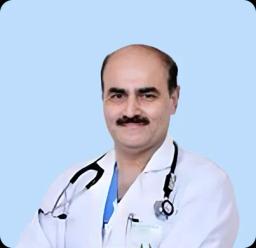
Dr. Arun Kumar Chopra
Interventional Cardiologist
23+ Years Of Experience
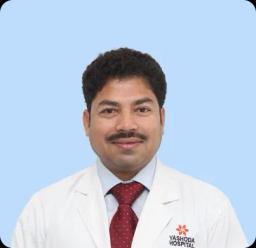
Dr. A Guru Prakash
Cardiologist
18+ Years Of Experience

Dr. Robert Mao
Cardiac Surgeon
43+ Years Of Experience

Dr. Manoj P Nair
Cardiac Surgeon
22+ Years Of Experience

Dr. Robert Coelho
Cardiac Surgeon
23+ Years Of Experience

Dr. Anil Sivadasan Radha
Cardiologist
28+ Years Of Experience
Cost Estimation
Learn about the expenses involved in the procedure and what factors affect them.

The cost of insertion of Ventricular Assist Device (VAD) varies due to several factors.
Hospital charges, surgeon fees, and anesthesia costs all contribute to the total expense. Pre-operative tests and post-operative care also influence costs. Location, the type of valve used (mechanical or biological), and the surgical approach (open-heart or minimally invasive) impact expenses. Insurance coverage affects individual costs, including deductibles and copayments. Our team can help you understand the precise costs based on your specific case and doctor’s recommendations.
In India LVADs cost between 45 lakh and 90 lakh.If you are doing a heart transplant then you will have to take medicines, which cost about ₹20,000-₹30,000 for the rest of your life. Also, the medicines are immunosuppressants, which will affect the kidney.
The average cost of the Insertion of Ventricular Assist Device (VAD) in India is around ₹ 90,000/- to ₹ 90,00,000/- .

₹ 90,00,000/-
High Cost
₹ 45,00,000/
Average Cost
₹ 90,000/-
Low Cost
The LIST of AVERAGE COST of the Insertion of Ventricular Assist Device (VAD) across TOP 6 cities in India in Indian Rupee (INR) is as follows :
City
Lowest Cost
Average Cost
Highest Cost
Chennai
₹ 45,00,000/-
₹ 65,00,000/-
₹ 90,00,000/-
Bengaluru
₹ 25,00,000/-
₹ 27,00,000/-
₹ 30,00,000/-
Hyderabad
₹ 25,00,000/-
₹ 27,00,000/-
₹ 30,00,000/-
Kolkata
₹ 7,00,000/-
₹ 9,00,000/-
₹10,00,000/-
Mumbai
₹ 90,000/-
₹ 1,00,000/-
₹ 1,60,000/-
Vishakapatnam
₹ 25,00,000/-
₹ 2700,000/-
₹ 30,00,000/-
Commonly Asked Questions
How long can a person live with a ventricular assist device?
Left ventricular assist device (LVAD) is usually used to keep a patient alive until a suitable heart donor is found. A patient may stay alive for 5 and a half years with LVAD.
Are ventricular assist devices permanent?
Permanent implantable ventricular assist devices (VADs) are now an important and established treatment as an alternative to heart transplantation for end-stage advanced heart failure.
Can the heart repair itself with a LVAD?
While the device is intended to stay in the body permanently, doctors noticed that, in some patients, the assistance provided by the LVAD allowed the patient's own heart to regain strength and function.
Who is not a candidate for LVAD?
LVADs are not appropriate for some people with advanced heart failure if they also have other conditions such as kidney failure, liver disease, lung disease, or blood clotting disorders.
What is the success rate of LVAD surgery?
Despite advanced heart failure (with most patients on intravenous inotropic therapy) and high risk of LVAD surgery, 94% of patients are able to be successfully discharged with an overall mortality (conditional on discharge) through 5 years of 38%.

Do you still have a query?


"I had a successful surgery at Fortis Escorts Hospital, and it was all thanks to Karetrip's help in finding the right hospital for me. The entire process was smooth and stress-free, with Karetrip handling all the arrangements and answering any questions I had. The medical team at the hospital was outstanding, and the facilities were top-notch. I highly recommend Karetrip to anyone looking for a tension-free healthcare experience."
Read MoreFatima
Chattogram


"Thanks to Karetrip, I got connected with MAX Hospital in New Delhi. The team guided me through every step – from finding the right doctor to handling travel and visas. They made a daunting process feel like a breeze. The care I received at MAX Hospital was outstanding, and I can't thank Karetrip enough for making it possible. They truly put patients first and go the extra mile to ensure a smooth healthcare journey. I'm grateful beyond words!"
Read MoreHasan
Dhaka


"At first, I was unsure about having a medical procedure done in a foreign country. However, Karetrip's team at Indraprastha Apollo Hospital made me feel much better. The hospital was very clean, modern, and had everything they needed to help me. The staff were very kind and did everything they could to make me feel comfortable. I'm really happy with how my treatment turned out, and I appreciate Karetrip for making it easy and stress-free."
Read MoreImran
Sylhet
 Google Reviews4.9/5
Google Reviews4.9/5




I had a successful surgery at Fortis Escorts Hospital, and it was all thanks to Karetrip's help in finding the right hospital for me. The entire process was smooth and stress-free, with Karetrip handling all the arrangements and answering any questions I had. The medical team at the hospital was outstanding, and the facilities were top-notch. I highly recommend Karetrip to anyone looking for a tension-free healthcare experience.
Fatima
Chattogram
 Google Reviews4.9/5
Google Reviews4.9/5





